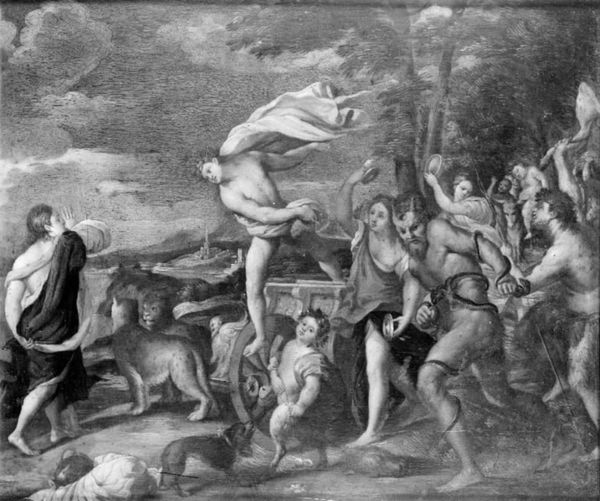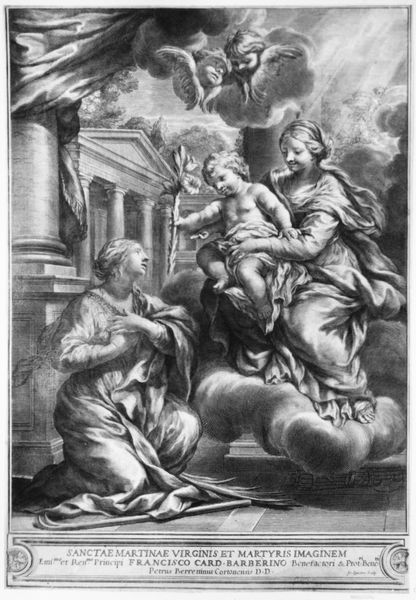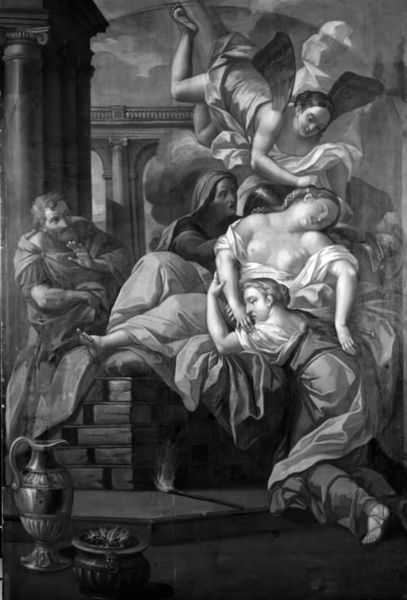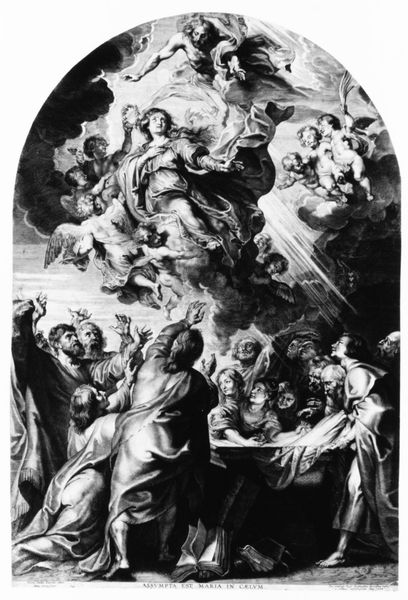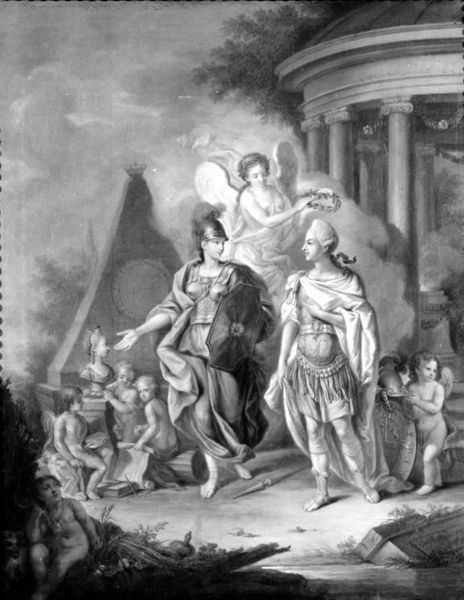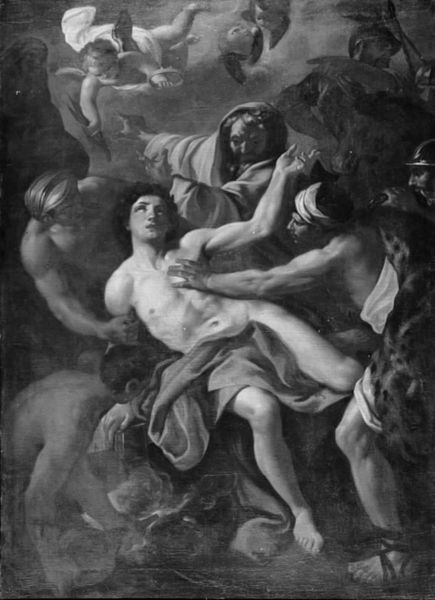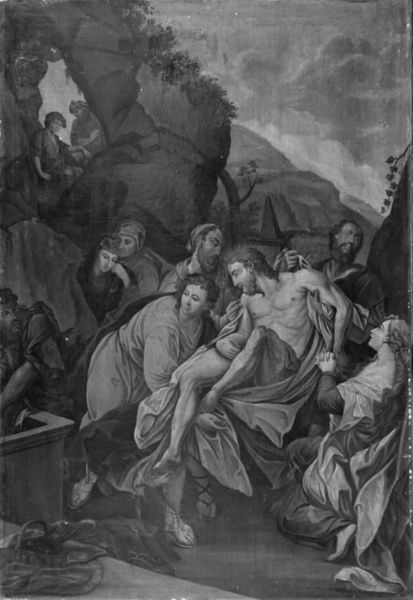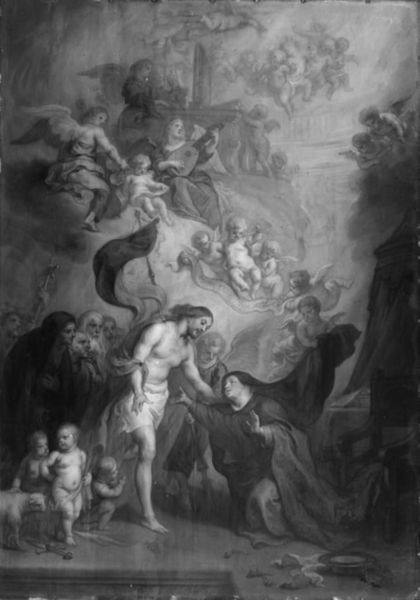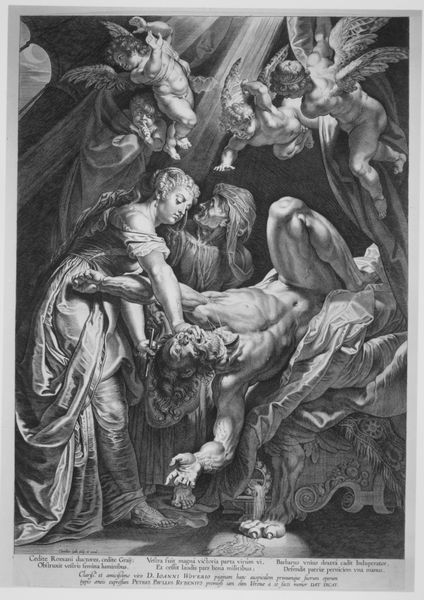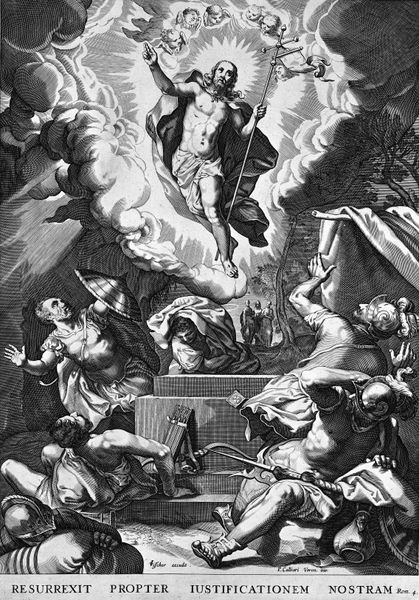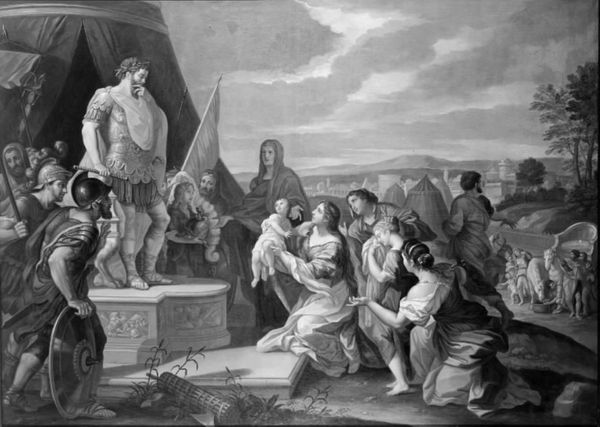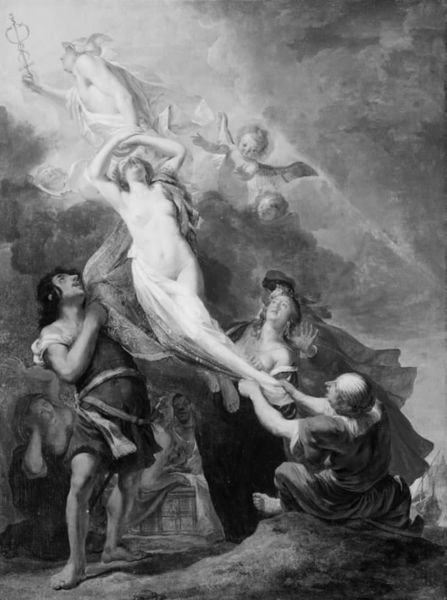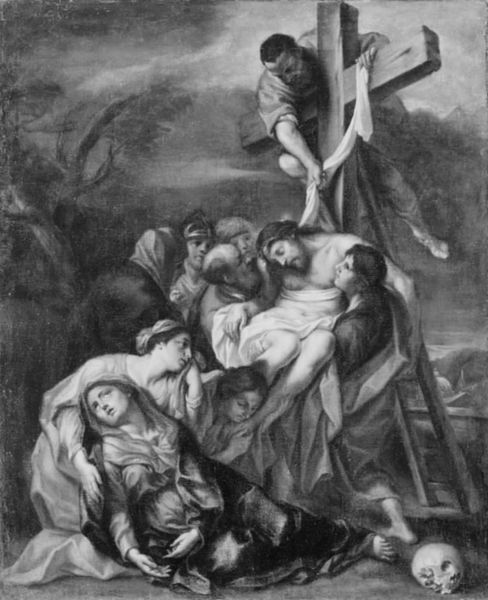
painting, oil-paint, canvas
#
allegory
#
baroque
#
painting
#
oil-paint
#
figuration
#
canvas
#
history-painting
Dimensions: 91.5 cm (height) x 72.5 cm (width) (Netto)
Curator: Standing before us is Jean-Baptiste Jouvenet's “The Sacrifice of Iphigenia,” completed between 1695 and 1717. It’s a monumental oil on canvas depicting the tragic Greek myth. Editor: Immediately, I’m struck by the unsettling contrast – the serene, almost floating figure above versus the brutal, grounded reality of the scene below. It speaks volumes about power, ritual, and perhaps the artist's perception of faith. Curator: Absolutely. Jouvenet uses a sophisticated Baroque compositional structure here. Note the ascending diagonal line guiding the eye from Iphigenia, about to be sacrificed, to Diana arriving in the clouds. The artist very carefully employed light and shadow. Editor: Considering the materials, it’s intriguing to think about the labour involved – from grinding pigments to preparing the canvas, each stage steeped in specific practices that mirrored the structured social hierarchies of the time. Those pigments weren't casually acquired. Their source and the method of application really influence the visual message here. The deep shadow could come from use of coal based material. Curator: And the texture! See how he contrasts smooth flesh with the rough fabric of the priest's robes. It highlights Iphigenia's vulnerability against the imposing authority of the high priest. The artist directs focus with contrasting colours here too. Note the pallid skin against darker hues of clothing and nature to direct the eyes of the audience. Editor: Yes, and look closely at the men preparing the tools for the ritual. This makes me consider the everyday craftsmanship and knowledge required. Their contribution in carrying out that social directive seems just as important as the decisions made from above. And it implicates these ‘workers’ in a rather complicated social problem of divine control. Curator: Precisely. Jouvenet is not just illustrating a story, but constructing a visual argument. He does this so deftly using both allegory and figuration. Editor: It does make you ponder who is really being "sacrificed" here, doesn’t it? Beyond the literal victim, it suggests that there may be whole groups of unnamed workers suffering beneath established cultural power structures. Curator: A poignant thought. The layers of symbolism and structural complexities certainly provide endless opportunities for interpretation. Editor: Indeed, and reflecting on the material conditions and artistic labour really shifts the focus onto power beyond the figures displayed, broadening our perception of its historical and continuing relevance.
Comments
No comments
Be the first to comment and join the conversation on the ultimate creative platform.
